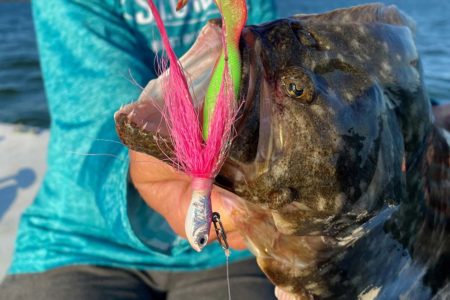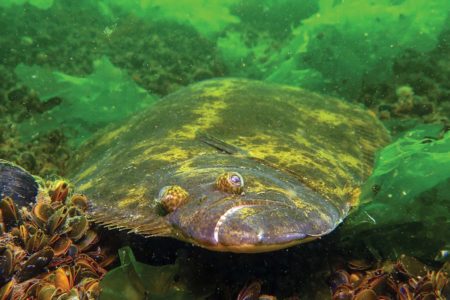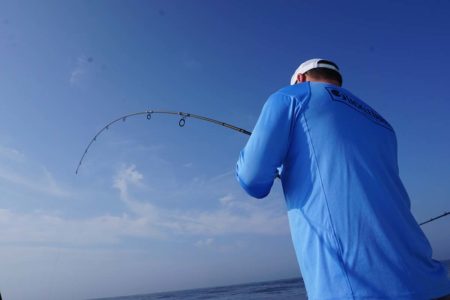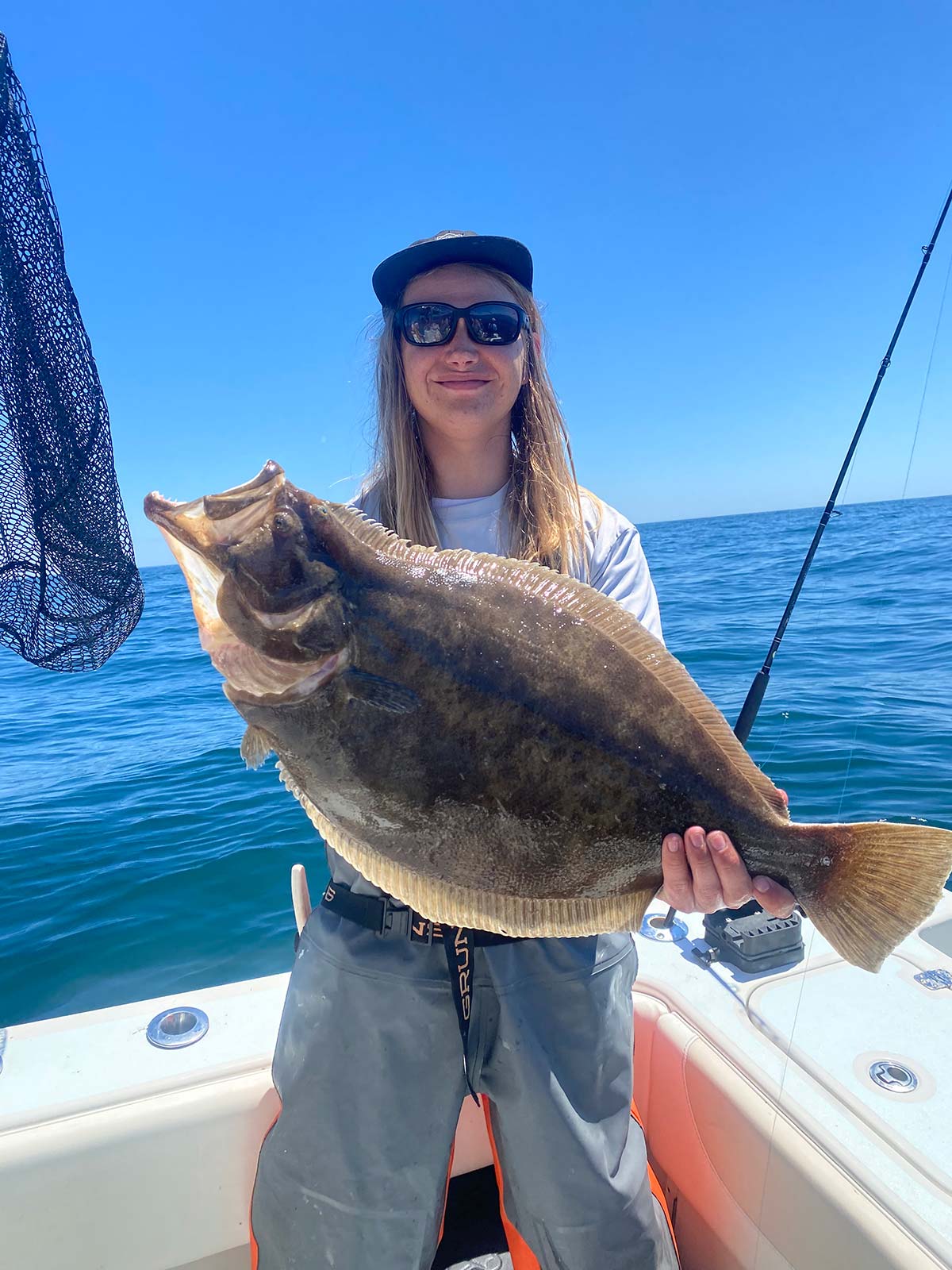
A real life Jurassic Park exists south of Nantucket for fluke fishermen, and when you go, it pays to be prepared for anything!
Going back several years, I recall one of my best friends talking about a headboat trip that left from Hyannis, MA to fish the Nantucket Shoals, rumored to be the Promised Land for targeting monster fluke. A group of guys organized a trip that summer on the Helen H, and were kind enough to include me.
I was ecstatic to say the least. A solid opportunity to top my personal best fluke was certainly an exciting idea. Those that had fished the shoals warned us of strong tides, and recommended we be prepared to fish as much as 24 ounces of lead to hold bottom. Not knowing what to expect, we loaded our tackle bags with gear, and set off on the boat to the Promised Land!
No Guarantees
The steam to the fishing grounds was approximately two hours, but that is subject to change depending on the time of the season. When we got to the grounds, we were met with little to no drift, and our heavy sinkers and drift rigs were not quite the proper application. That trip was a grind, as the captain had to power drift, bumping the engines on and off to simulate a tidal drift. With barley any drift, we had to adapt.
We dropped down the weights of our rigs, and those that had spinning gear swapped to bucktails and teasers and began pitching their jigs out from the boat, and slowly bouncing them back. That method was most effective; several limits of fish were landed, with quite a number of fish ranging from 7 to 11 pounds. That was the biggest lesson I took back from that day, was to be ready to adapt to any condition.
Slow Drift
By no means now am I a veteran, but it has been four seasons since that first trip, and I’ve made it a point to make the pilgrimage several times each year to target these doormat fluke, and since then I’ve learned quite a lot about the fishery, and some of the better ways to target them during different conditions. As I said before, the ability to adapt quickly, can make all the difference in landing that trophy flatfish. I highly recommend bringing aboard at least two rods. One being a spinning rod capable of casting 2- to 6-ounce lures. This rig will be invaluable on those trips with no drift. Light line is key for fishing the deep passages along the shoals, as the thinner diameter the line, the easier it will be to cut through the water column. Spinning reels are typically spooled with 8- to 20-pound test braid paired with a monofilament shock leader, then tied to a fluorocarbon leader.
As mentioned before, the standard bucktail and teaser rig is typically best for this application. If you are not familiar with this, here is a basic explanation. The rig will consist of a bucktail jig on the bottom, and approximately 18 to 24 inches above, will be a dropper loop for adding your teaser. One of the easiest ways to determine the best weight for your bucktail is to ask others around you what they’re holding with, it’s best to use similar weights to avoid tangles.
The most important factor when it comes to choosing a teaser is how much drag it will add to your rig. When there is little to no drift, a simple bait holder hook, with your favorite piece of Gulp will work well. The stronger the drift, the smaller the Gulp you may want to use, but it is hard to beat their 5- and 6-inch grubs!
Fisherman subscribers who signed up at the shows may want to try their FishBites Grubs which the fluke also love. As the drift builds, the baitholder may be switched out for a teaser with a leadhead, more popularly known as either a “poison tail” or “glass minnow”. These teaser jigs typically weigh less than an ounce and simply keep your baits tighter to the bottom. Anglers will fish their jigs, bouncing bottom, stirring up the sand in an attempt to capture the attention of a hungry fluke! The speed and cadence that you jig with is entirely up to you, but my advice is to mix it up, different method trigger better bites on different days. This bucktail teaser rig can be fished until 8 ounces of lead or more is required to hold bottom.
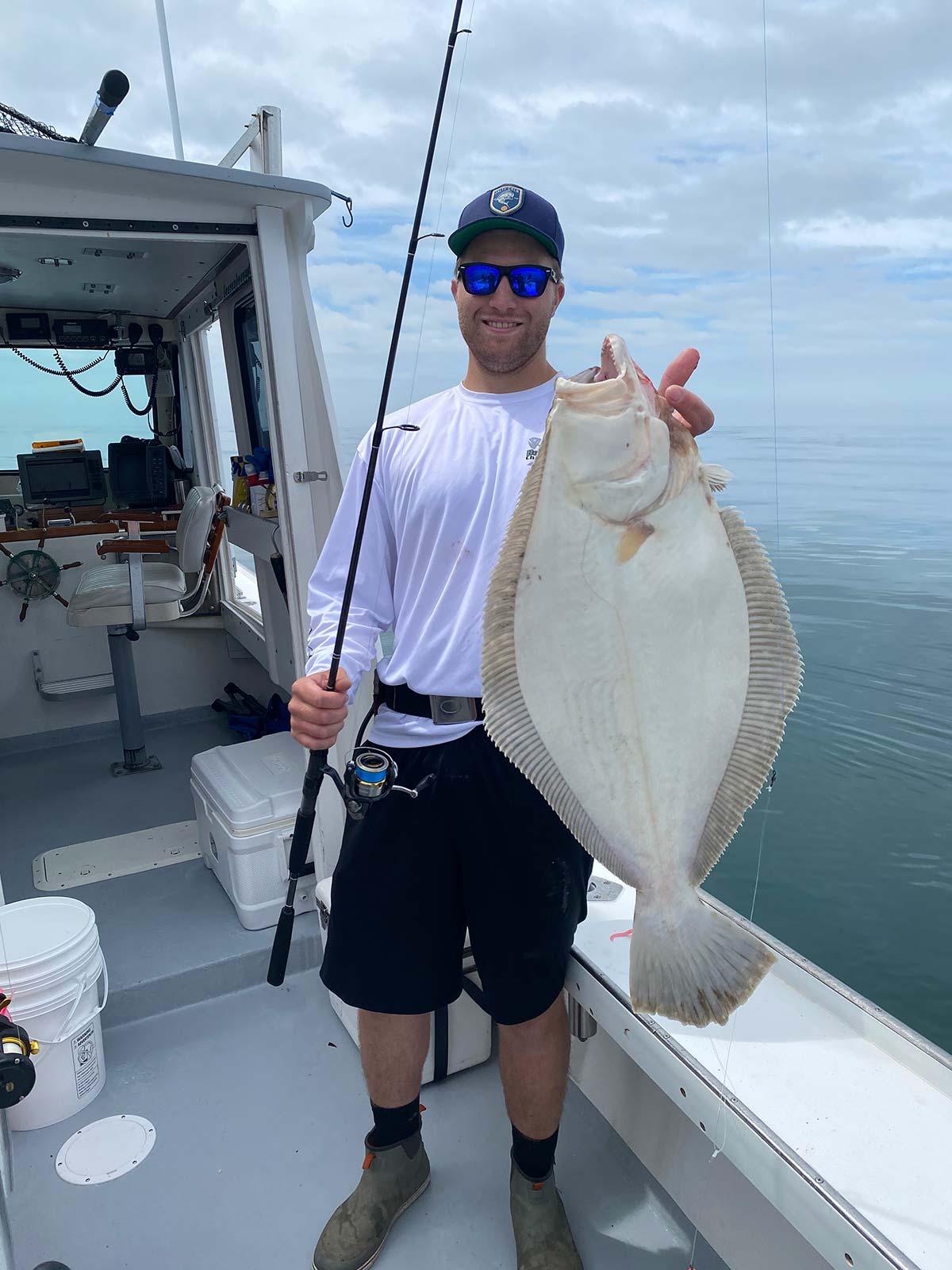
Heavier Drift
That’s when it’s time for the heavier rod. This is typically a conventional setup with a low-profile reel spooled with 15- to 30-pound braid and many anglers will use a 15- to 20-foot monofilament shock leader. The most popular rig for fishing heavier tides is some kind of hi-lo rig or what some call a ‘popcorn rig’. But no matter what you call it, it’s going to put fish on the boat.
This rig consists of a dropper loop on the bottom, for attaching your sinker; bank sinkers are the most common, but fluke balls are also used. (Fluke ball sinkers, also known as cannon ball sinkers, are completely round, which keeps your contact with the bottom pretty consistent.) Then there are two more dropper loops, one 16 inches above the sinker and another about a foot further up the line, teaser jigs should be attached to both. Anglers sometimes use two of the same color teasers to simulate a small school, while others will use two contrasting colors, in an attempt to determine the “hot color” of the day, and the hot colors do tend to change from day to day!
This rig is sent to the bottom and is rapidly bounced as the boat drifts. The angler can get used to the weight of the rig, and oftentimes on the lift of one of these bounces, they suddenly feel significantly more weight. This is referred to as a fluke “laying on your bait”. Other times, you may feel more of a strike, not every hit will result in a hookup. But if you miss a bite, continue working your rod how you were, as fluke will almost always strike again after missing the first time! This rig is one of the most effective on the Shoals, and should be a part of every fluke fisherman’s playbook.
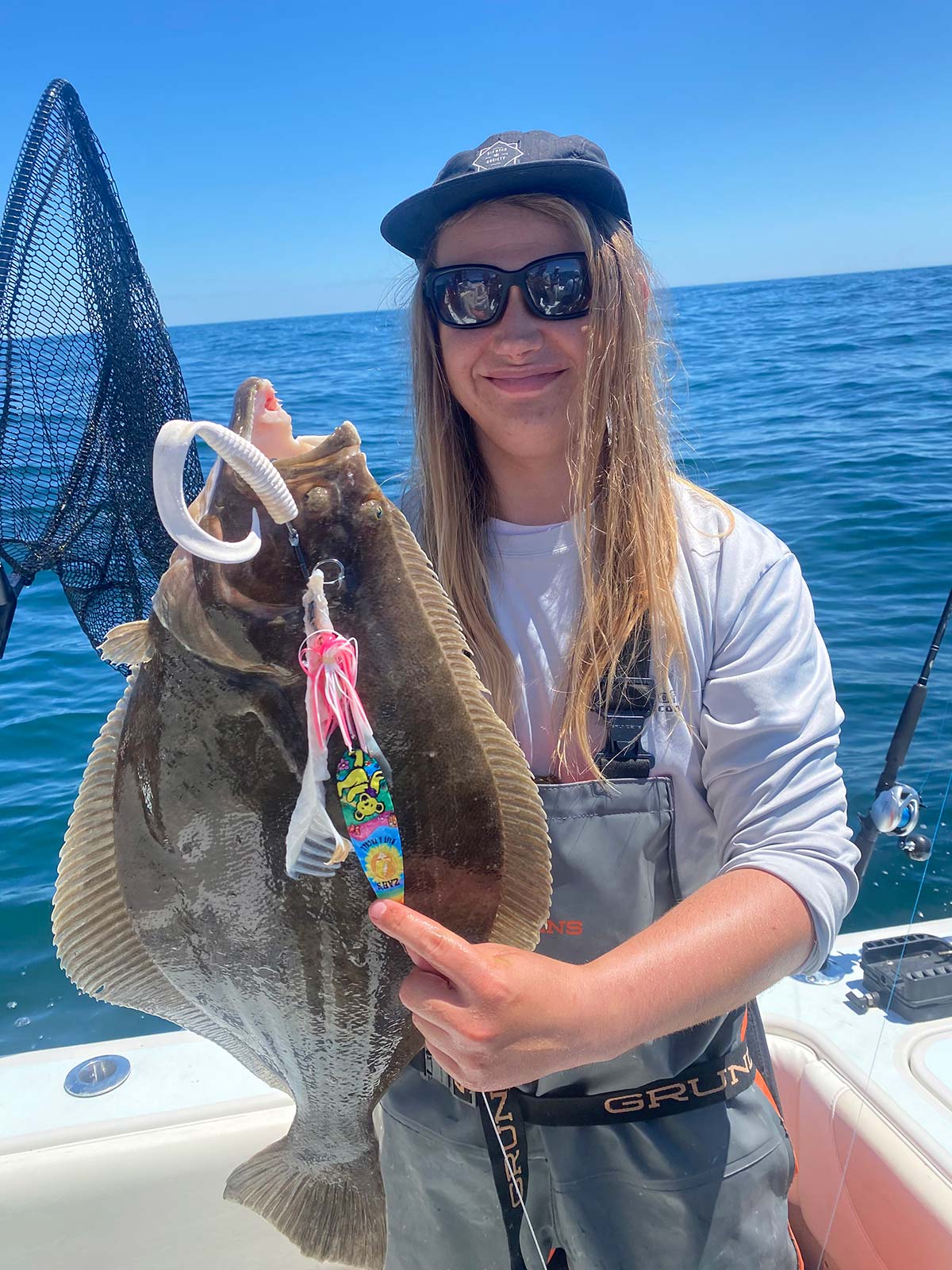
Drift Spoons
The third rig that I’d recommend all those that make the trip to the shoals stock up on a few of, would be the spoon or drift spoon rig. It can be fished on the same conventional setup that the popcorn rig is fished on, or you could add a third rod to your arsenal, with a bit heavier line and more backbone for heavier weight. This rig is most effectively fished when the drift is between 1.3 and 2 knots. The speed of the drift keeps the spoon fluttering perfectly with little to no effort from the angler.
This rig consists of a three-way swivel, tied to the shock leader or main line, then from one of the swivels, there is approximately 12 to 18 inches of line to a dropper loop for adding your sinker. On the meat end of the swivel, will be a 4- to 5-foot leader, typically 30- to 40-pound fluorocarbon, tied to your favorite drift spoon. I was introduced to drift spooning by a close friend, and within a year of that introduction, there were several manufacturers selling their own drift spoon rigs. The most popular of these manufacturers, would be M3TACKLE, a New Jersey-based company, whose products rapidly gained popularity among those targeting doormat fluke. They manufacture three sizes, 3, 4.5, and 6 inches, with the larger two being the most popular for Nantucket waters. There are often schools of mackerel and herring offshore, and these spoons do a great job of imitating them.
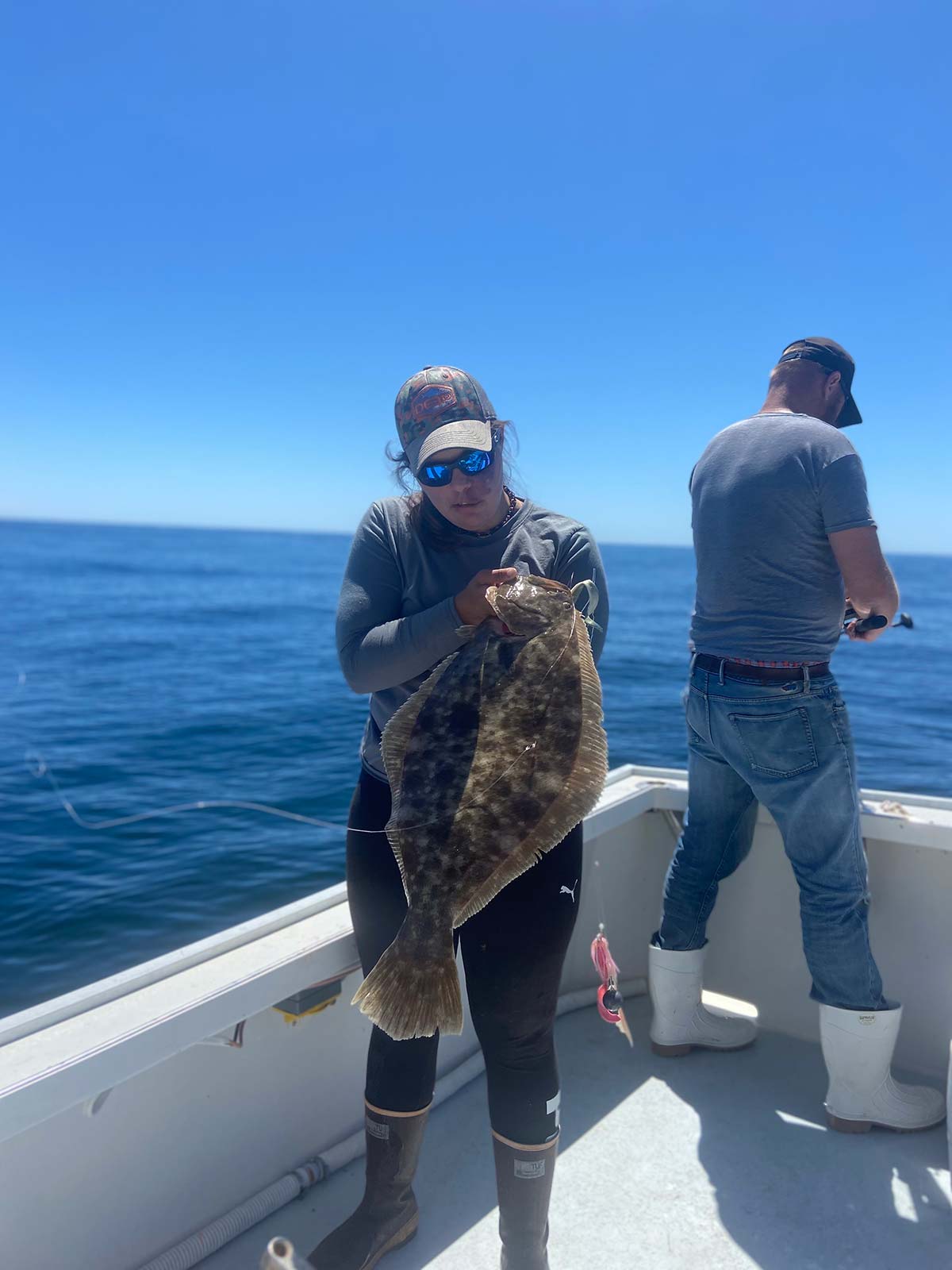
The Real Thing
Anyone that knows me will tell you that I’m a bait junkie, and love to have an array of high quality baits on the menu for fluke fishing. While the standard squid strip and single spearing approach will still catch fish, I’ve found there are a number of other baits that are just as if not more effective! The first of which, would be fluke bellies. This is the ribbed stomach meat from a fluke that is removed after filleting the fish. Great captains like Capt. Mike of Emmajack Charters always have a couple of gallon bags full of fluke bellies from previous trips, ready for anglers to bait their hooks with. Fluke bellies are incredibly tough, and it’s not uncommon to catch multiple fish on one strip. As great a bait as fluke bellies are, it isn’t always enough. Whole squid, Peruvian smelt, bluefish and mackerel strips all have their time and place out on the Shoals.
While bait is great for drawing in predators, unfortunately they are not always the right species. If you are fishing bait and the boat drifts over any amount of dogfish, you’ll be sure to hook up with one and it will probably death roll in your leader causing an impossible tangle. It usually only takes this happening once for me to switch to strictly Gulp!
While the Nantucket Shoals are known for giving up tremendously large fluke, it is important to keep in mind how crucial the large breeding fish with good genes are to the fishery. I strongly encourage that if you do land a double-digit fluke, that you consider releasing it, so that it can go on to produce many more, and grow even larger! You can’t have 15-pound fluke if you never release any of the tens! It’s a very important insight to have, as this is not a tremendously old fishery, and as it gains in popularity, we have to do our best to preserve it. Rod and reel fishermen have not always known Nantucket to hold these numbers of large fluke. It was actually a group of draggers that we have to thank for it, that tipped off Captains like Jimmy the Greek, about these huge fluke they were dragging up in their nets. Since then, every year, there has been more and more fishing pressure there, and it’s important to keep that in mind when selecting which fish to harvest on a given trip!
The trip to the Nantucket Shoals is long and the conditions can be all over the place, but one thing is sure, it’s designation as the “Promised Land” for those looking to land a doormat fluke is well deserved. And it’s worth the time, preparation and effort to get there.

